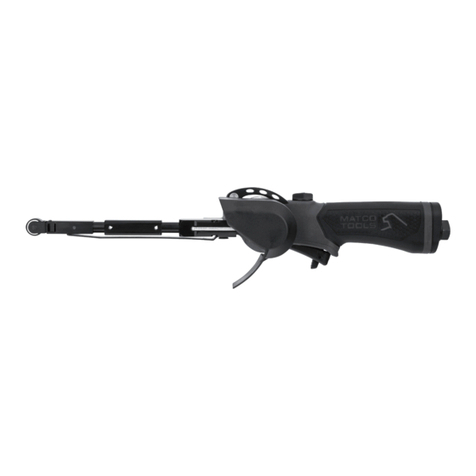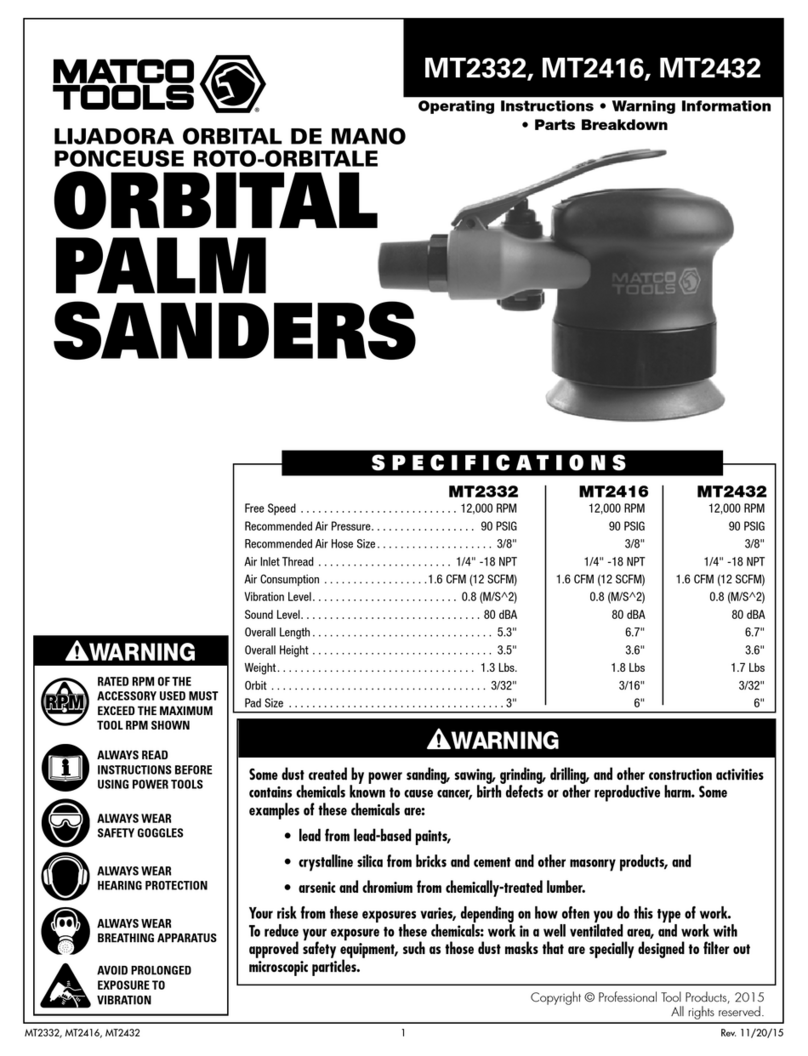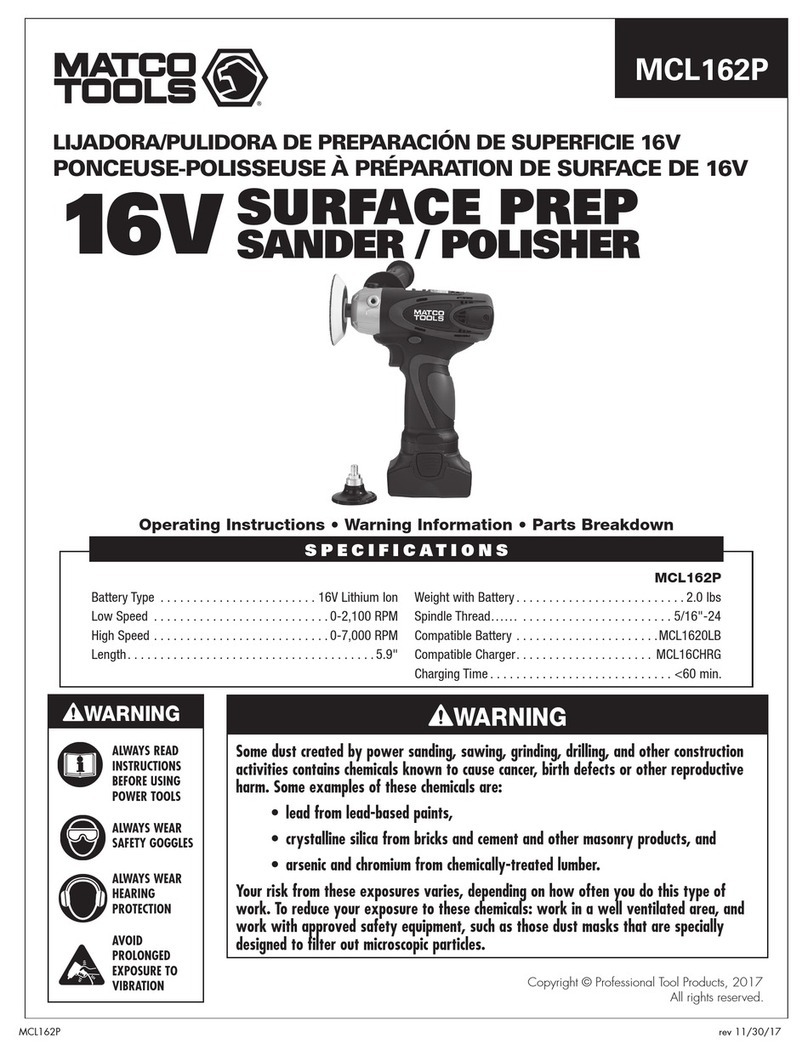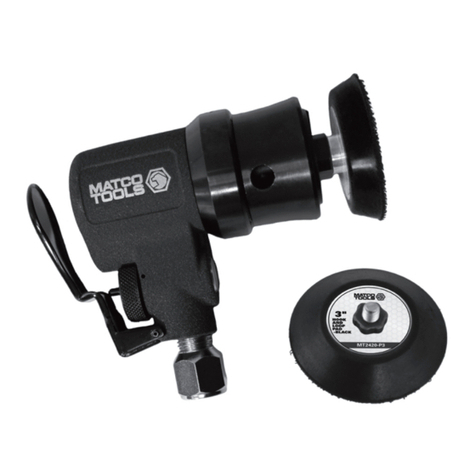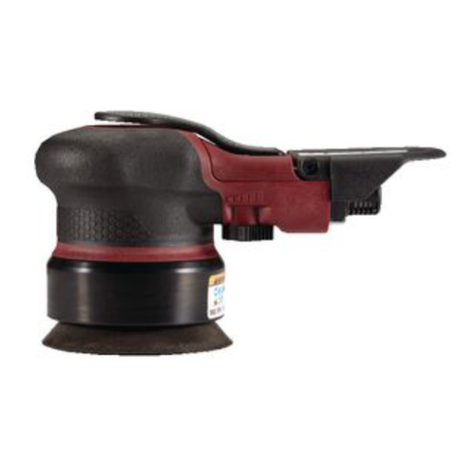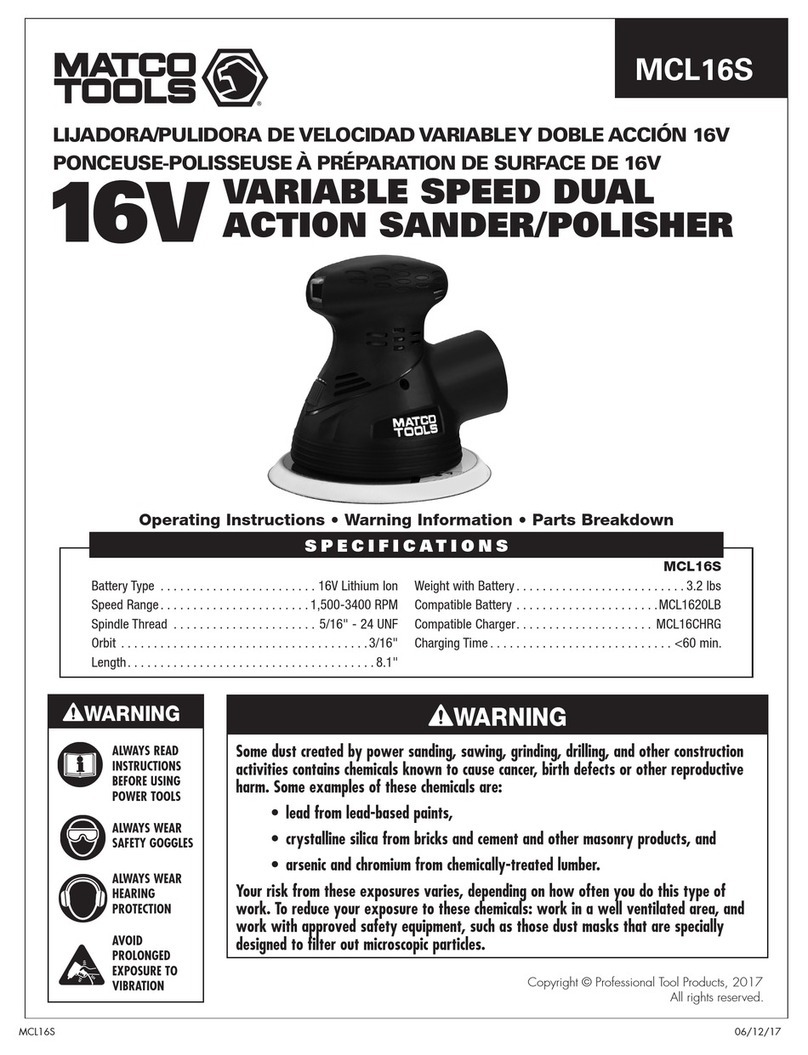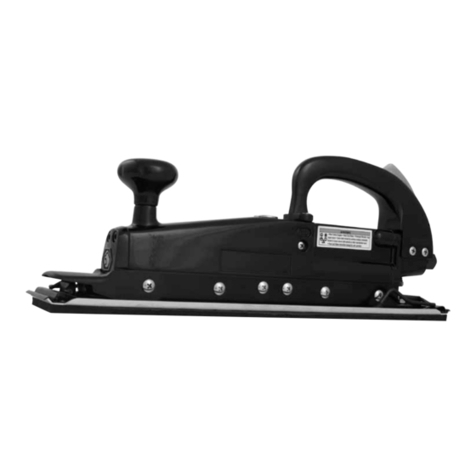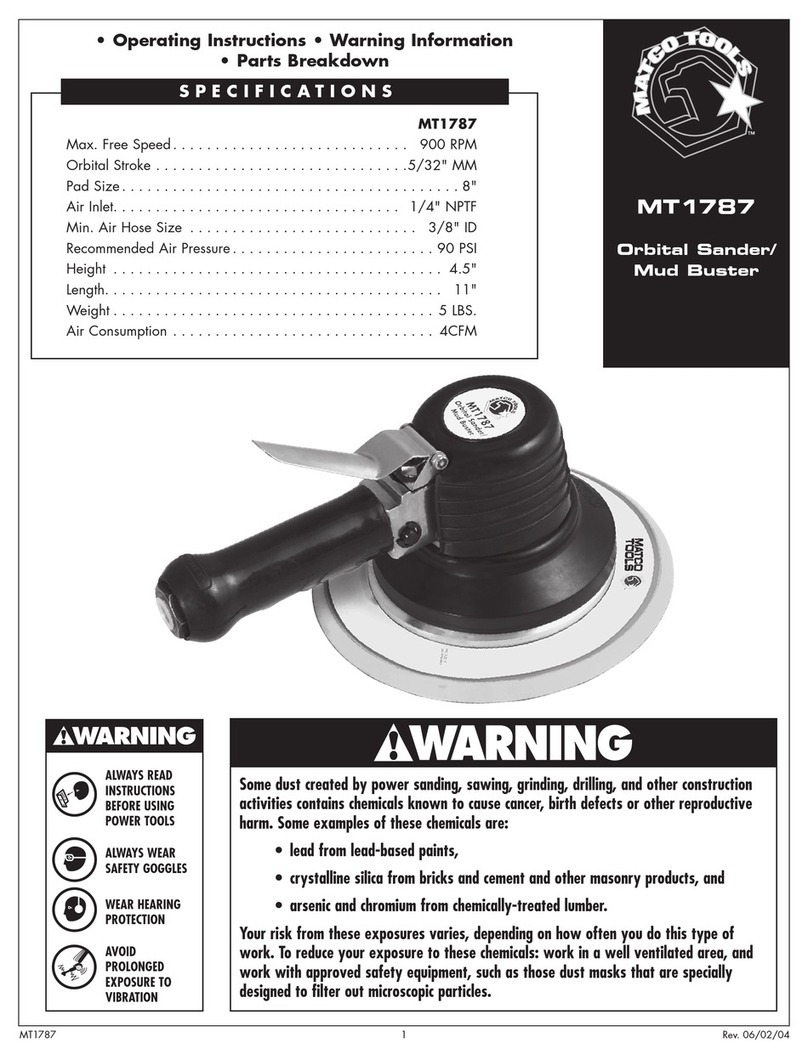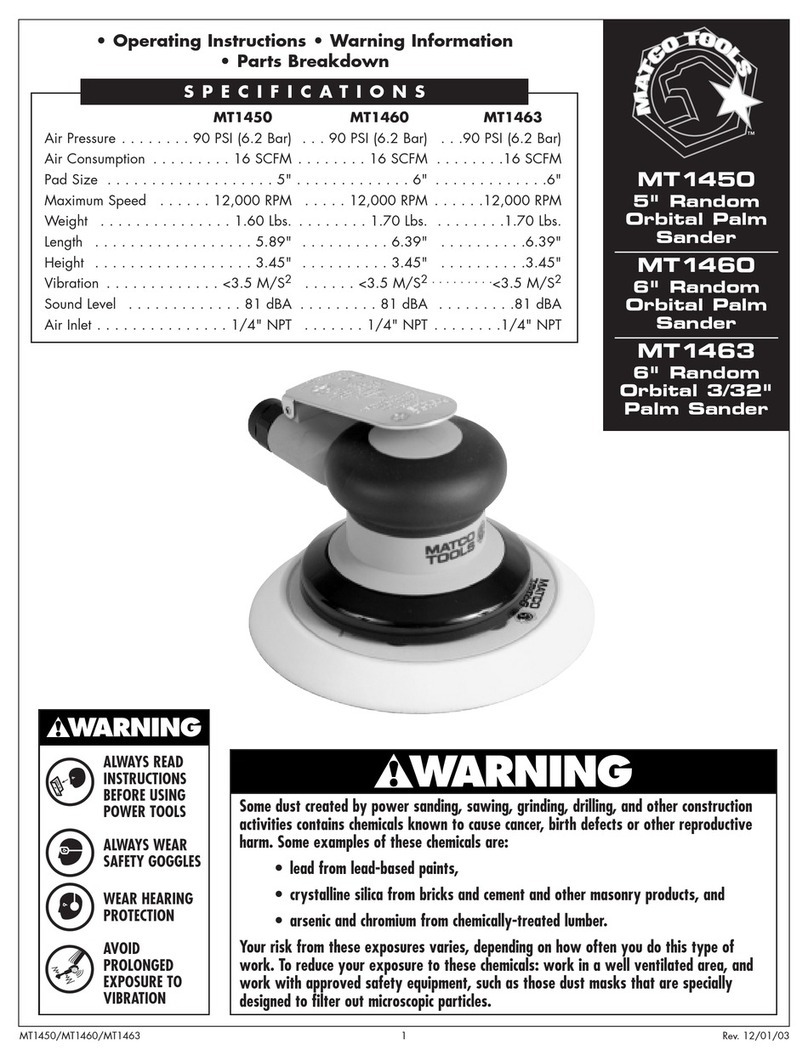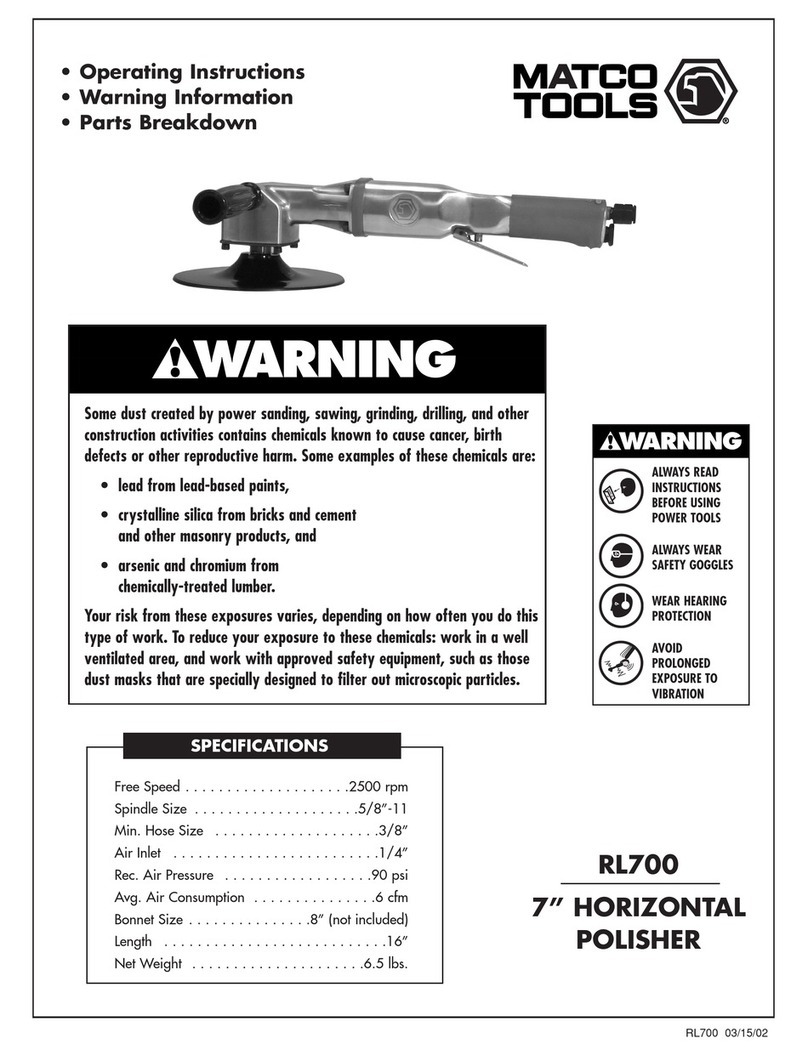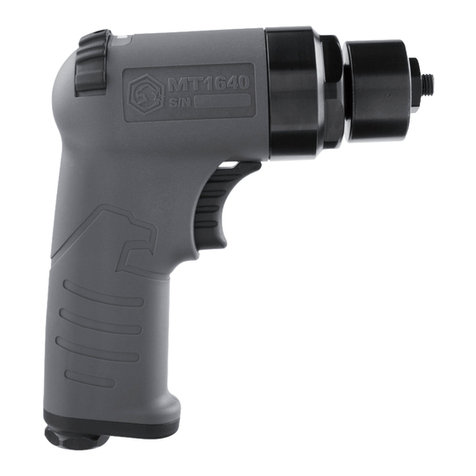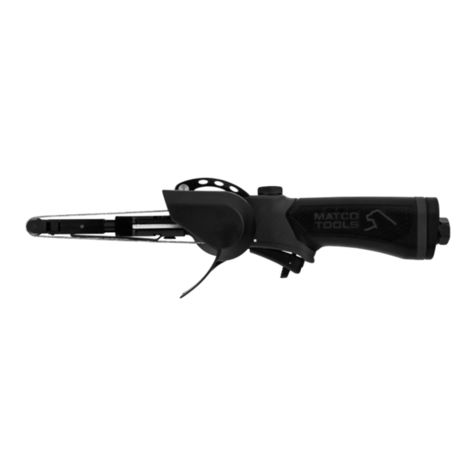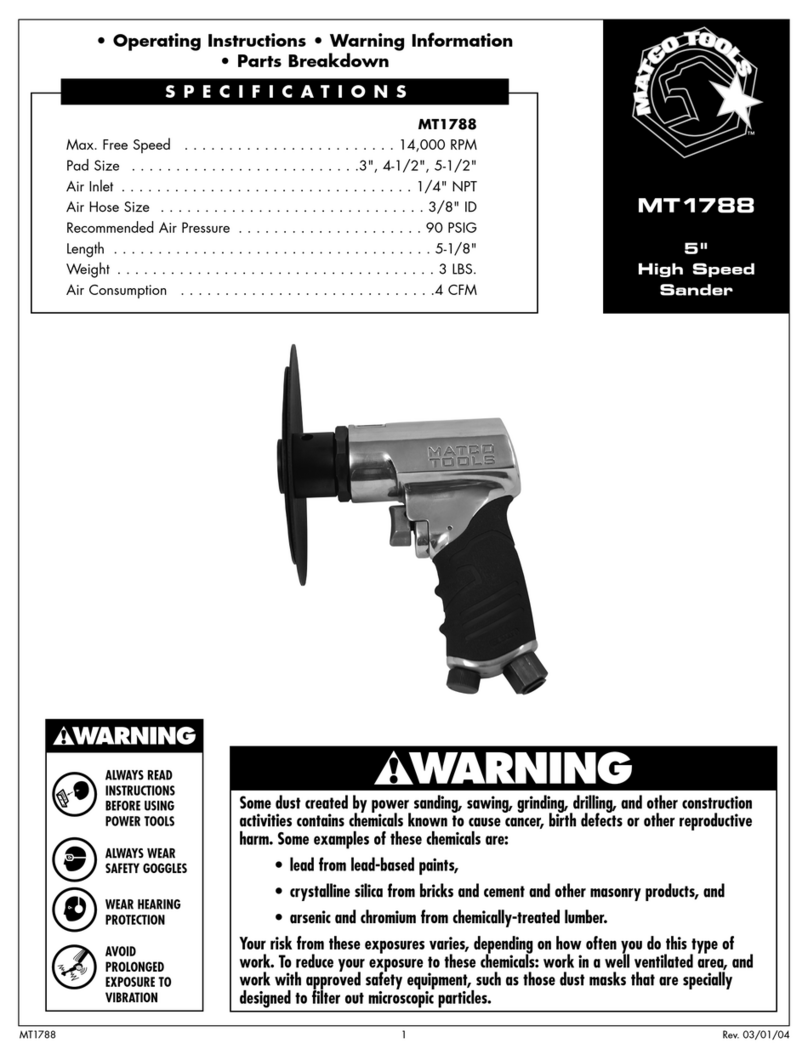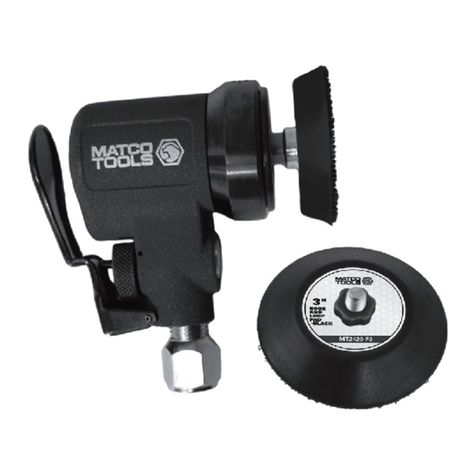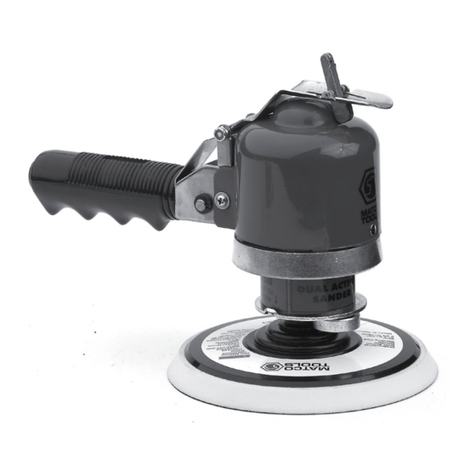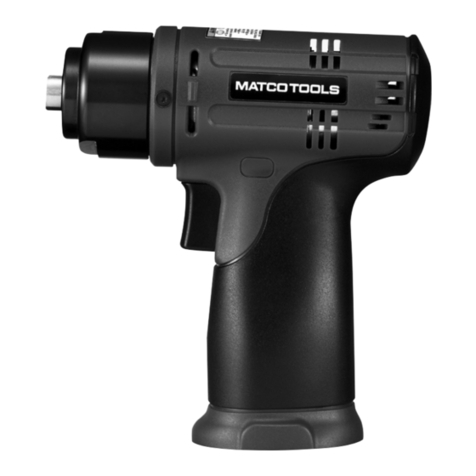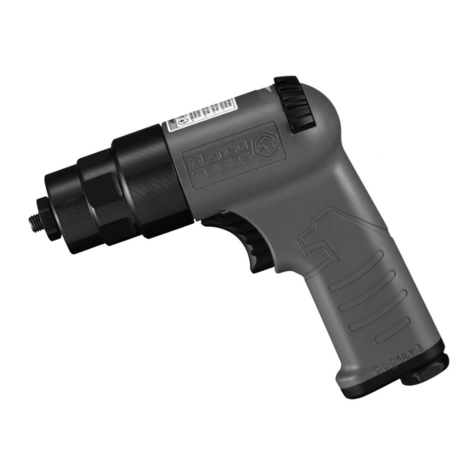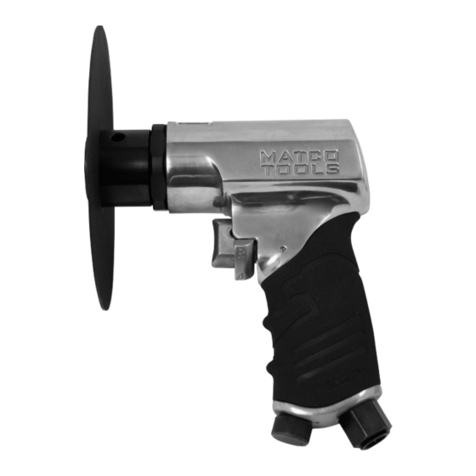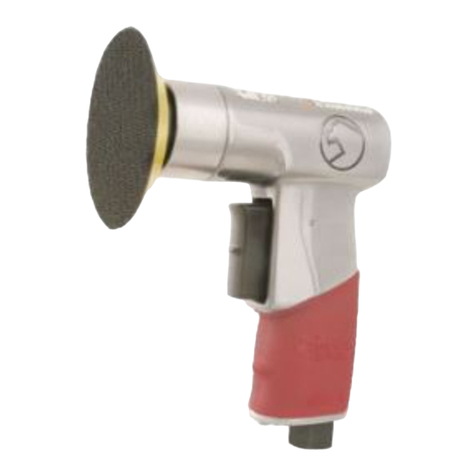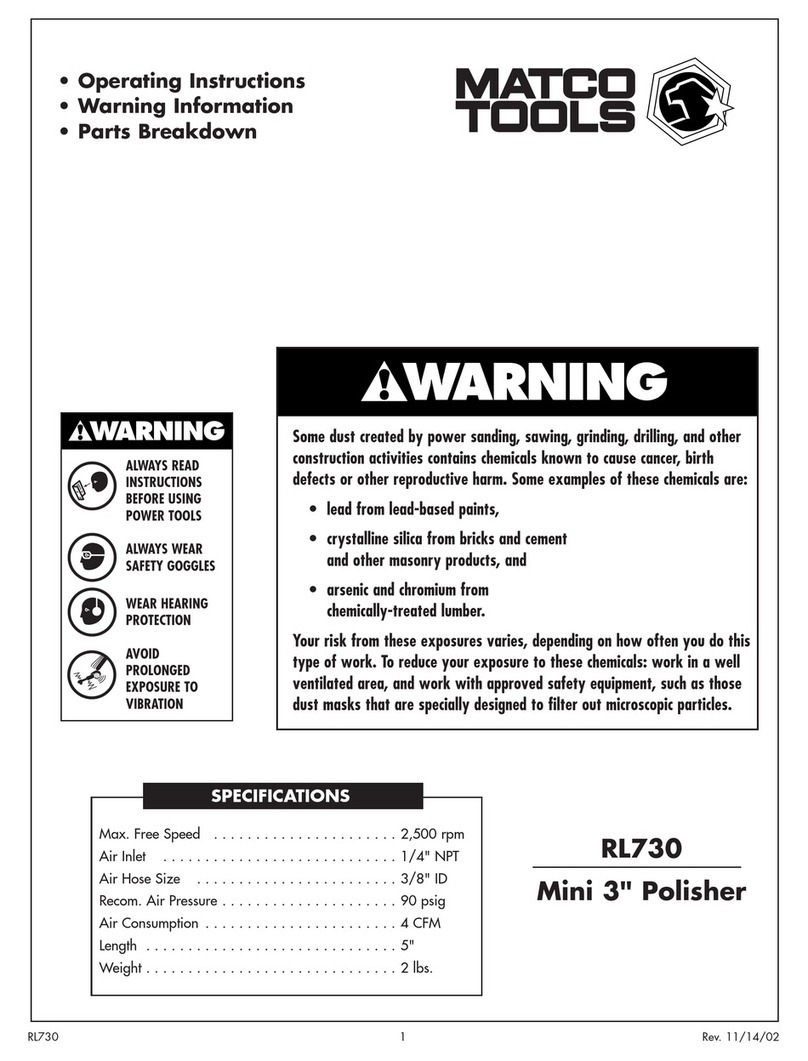RL425 4 Rev. 09/11/03
Tools of this class operate on a wide range of air
pressures. It is recommended that air pressure of these
tools measure 90 PSI at the tool while running free.
Higher pressure and unclean air will shorten the
tool’s life because of faster wear and may create a
hazardous condition.
Water in the air line will cause damage to the tool.
Drain the air tank daily. Clean the air inlet filter
screen on at least a weekly schedule. The recommended
hook-up procedure can be viewed in Figure 2.
The air inlet, Figure 1, used for connecting air
supply, has standard 1/4" NPT American Thread.
Line pressure should be increased to compensate for
unusually long air hoses (over 25 feet). Minimum hose
diameter should be 3/8" I.D. and fittings should have
the same inside dimensions
AIR SUPPLY
Before operating this sander, it is important to ensure
that the sanding pad is secure. To do this, hold the
stop spanner on the gear shaft and turn the pad
clockwise until tight.
Note: Make sure dead handle is installed on
appropriate side of sander for positive grip while
operating tool.
To change sanding discs: Remove retaining nut , place
abrasive disk on sanding pad, then replace retaining
nut. Again, make sure pad is tightened securely.
Let the sander do the work. The normal weight of the
machine is sufficient for efficient sanding. Do not put
excessive pressure on the machine. This will only slow
down the speed of the pad, reduce sanding efficiency
and put an additional burden on the motor. Start the
sander off the work, set it down on the work evenly
and move it slowly back and forth in wide, overlapping
areas. When finished sanding, lift it off the work
before stopping the motor.
OPERATION
TROUBLESHOOTING
LUBRICATION & MAINTENANCE
WARRANTY
Other factors outside the tool may cause loss of
power or erratic action. Reduced compressor output,
excessive drain on the air line, moisture or restrictions
in air pipes or the use of hose connections of improp-
er size or poor conditions may reduce air supply. If
outside conditions are in order, disconnect tool from
hose and take tool to your nearest Matco authorized
service center.
Lubricate the tool daily with a good grade of air tool
oil. If no air line oiler is used, run a teaspoon of oil
through the tool. The oil can be squirted into the tool
air inlet, Figure 1, or into the hose at the nearest
connection to the air supply, then run the tool. A rust
inhibitive oil is acceptable for air tools.
Matco warrants its air tools for a period of 1 year to
the consumer. We will repair any air tool covered
under this warranty which proves to be defective in
material or workmanship during the warranty period.
In order to have your tool repaired, return the tool to
any Matco Authorized Warranty Center, freight
prepaid. Please include a copy of your proof of
purchase and a brief description of the problem. The
tool will be inspected and if any part or parts are
found to be defective in material or workmanship,
they will be repaired free of charge and the repaired
tool will be returned to you freight prepaid.
This warranty gives you specific rights. You may also
have other rights which vary from state to state.
The foregoing obligation is Matco's sole liability
under this or any implied warranty and under no
circumstances shall Matco be liable for any incidental
or consequential damages.
Note: Some states do not allow the exclusion or
limitation of incidental or consequential damages so
the above limitation or exclusion may not apply to you.
